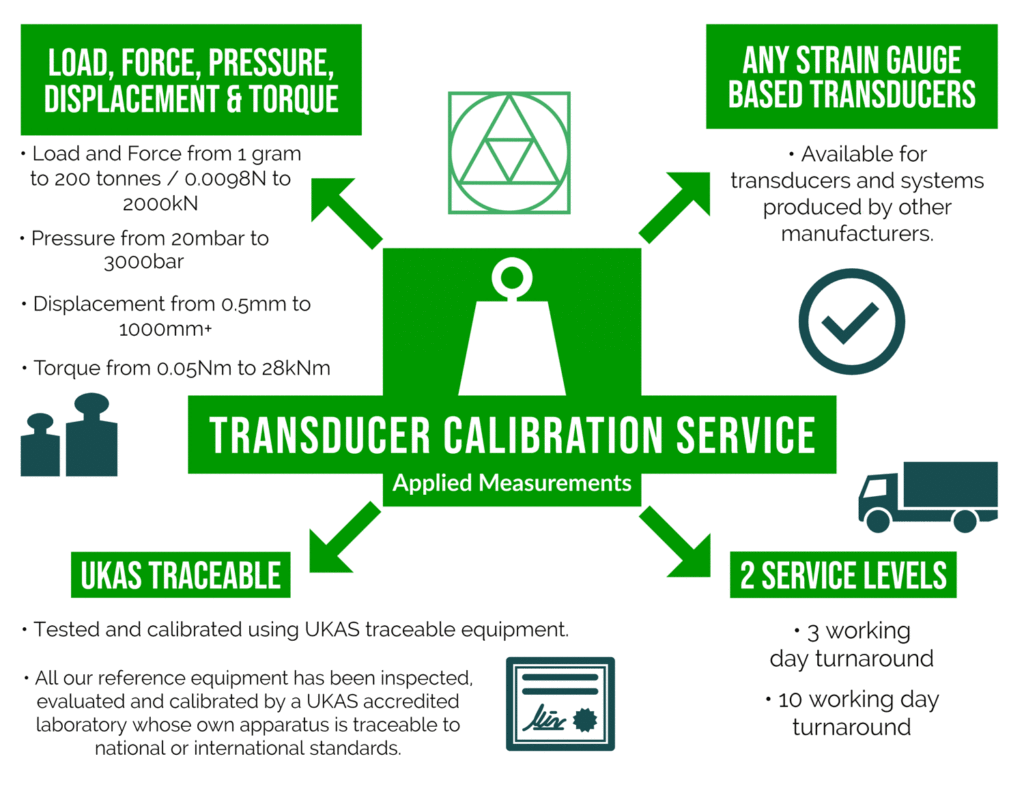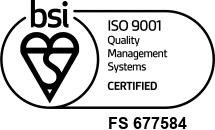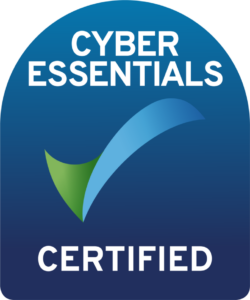Our UKAS Traceable Calibration Service
We Provide a UKAS “Traceable” Calibration Service
We will provide you with a UKAS “traceable” calibration certificate along with the reference equipment’s traceability details, whose accuracy is traceable to the United Kingdom Accreditation Service (UKAS).
This means that all our reference equipment has been inspected, evaluated and calibrated by a UKAS-accredited laboratory whose own apparatus is traceable to national or international standards.
Our calibration facilities cover:
- Load and Force from from 1 gram to 200 tonnes / 0.0098N to 2000kN
- Pressure from 20mbar to 3000bar
- Displacement from from 0.5mm to 1000mm+
- Torque from 0.05Nm to 28kNm
For instances where calibration ranges above or below this are required we use the extensive network of external calibration facilities to which we have access which includes the National Physical Laboratory (NPL) in London.
All our calibrations come with a UKAS traceable certification as standard.
How quickly can you calibrate my transducer?
Our UKAS traceable calibrations are completed within 10 – 15 days.
How much will it cost me?
For accurate and up-to-date pricing for our UKAS traceable calibration service levels, full UKAS certification and various calibration options, please contact our sales team.
We can also offer a full UKAS certification
When a full UKAS certification is required, this is provided through our association with the appropriate UKAS-accredited laboratories including the National Physical Laboratory (NPL) in London.
A full UKAS calibration is carried out within a UKAS-accredited laboratory that is fully compliant with the requirements of ISO/IEC 17025:2005.
Both the UKAS traceable and full UKAS accreditation demonstrate competence to calibrate, test, or measure an instrument or product.
What about third party transducers and systems?
Our transducer calibration services are also available for transducers and systems produced by other manufacturers. Please contact us first before sending in.
Why would I need my transducer calibrated/re-calibrated?
Only a calibrated transducer should be used in an application to ensure accurate and reliable test results.
If an un-calibrated transducer were to be used in an application you risk having invalid test results leading to:
- An increase in costs due to invalid measurement
- Risk of Accident
- Failure of transducer and connected equipment
How often should I have my transducer re-calibrated?
We recommend transducers are re-calibrated on an annual basis to ensure they continue to operate within specification.
Periodic calibration of a transducer confirms its operation within its design specifications. There is no set period of time before your transducer needs to be calibrated as its performance will depend on factors such as the application, the environmental conditions and frequency of use.
What is a transducer calibration?
Calibration is the process of checking the accuracy of a measuring instrument by comparing it against a known standard.
- The standard is the piece of equipment known to be calibrated, traceable to the United Kingdom Accreditation Service (UKAS).
- The measuring instrument is the transducer under test.
The aim is to make sure the instrument operates within its specifications and to the specifications of UKAS.
Interested in this service? Let us call you...





